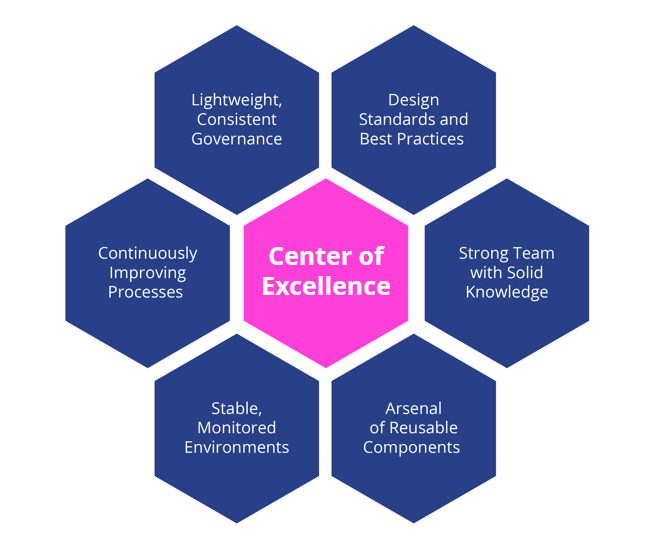Human Resource Partners
|
1 on 1 Sessions |
Workforce of the future The competing forces shaping 2030 PWC
Center Of Excellence
Center of Excellence model
The Center Of Excellence Model: Purpose, Intent and Value Proposition. COEs have evolved to have different missions, some more tactical and some more strategic. Their three primary mission areas are: Run the Business, Grow the Business, and Transform the Business.
The Center Of Excellence Model: Purpose, Intent and Value Proposition. COEs have evolved to have different missions, some more tactical and some more strategic. Their three primary mission areas are: Run the Business, Grow the Business, and Transform the Business.
Centers of Excellence Human Resources
COEs are a group of sub functions within HR that use best practices to develop and support critical capabilities that align with the organizational priorities. A COE is staffed with employees who have specific expertise in the area.
COEs are a group of sub functions within HR that use best practices to develop and support critical capabilities that align with the organizational priorities. A COE is staffed with employees who have specific expertise in the area.
Everything You Need to Know About Centers of Excellence - Access to Expertise is More Important Than Ever
Center of Excellence Definition: What is a COE?
Center of Excellence Implementation
How the Catalant Platform Enables COE Success
Today’s enterprises face unprecedented pressure from more nimble startups, volatile market trends, and a global health crisis. Those that thrive will be hyper-focused on driving value in the long term, innovating and adapting to changing conditions faster than their competitors.
However, most organizations simply aren’t built to succeed this way. A recent PwC Survey found that leaders are extremely concerned about their organization’s rate of innovation. In fact, 44% of CEO’s felt their speed of technological change was insufficient, and 32% did not possess the availability of key skills. KPMG found that 57% of CEOs are concerned that their organizations don’t have innovative processes to respond to rapid disruption, and in a separate study PwC discovered that 61% of companies say the solution to reaching strategic goals is collaborating more across functions, paired with faster decision-making.
It is clear that organizations are failing to innovate rapidly because they lack fast access to expertise. Gartner learned in one study that 75% of organizations will fail to achieve the full potential of the internet of things (IoT) due to lack of access to data scientists and another 80% of companies that expected to employ AI by 2019 failed for similar reasons. Meanwhile, McKinsey found that only 20% of companies have maximized their potential and achieved advanced analytics at scale, even while most companies understand the importance.
Even beyond leading-edge technologies, access to expertise remains a challenge for enterprise leaders. In 2018, McKinsey found that organizations that move top talent to high-priority initiatives quickly were 2.2X more likely to return shareholder value than their slower counterparts.
Centers of Excellence Streamline Access to Expertise
Centers of Excellence were designed to improve the reach of critical expertise throughout the organization, agnostic of geographical location or business unit. For functions like IT or Operations, centers of excellence already have a strong track record of success.
Gartner shows that 95% of organizations that establish a Cloud Center of Excellence will deliver measurable cloud transformational success through 2021. McKinsey learned that 60% of top-performing companies in advanced analytics have a “center of gravity” to drive their analytics efforts forward, and in a separate study Garter found that 50% of organizations with more than three AI projects will establish a Center of Excellence for AI by 2022.
So what is a Center of Excellence, how can you stand one up in your organization, and what are the benefits they deliver to the bottom line? Read on to learn everything you need to know about Centers of Excellence.
Center of Excellence Definition: What is a COE?A COE (Center of Excellence) is a centralized unit of dedicated people with a mission to streamline access to scarce, high-demand capabilities for rapid execution across the business. This group hones expertise in a specific subject area, standardizes best practices for wide-scale adoption, and provides thought leadership & direction in their area of expertise.
According to Gartner, COEs exist to “concentrat(e) existing expertise and resources in a discipline or capability to attain and sustain world-class performance and value.” These virtual or physical centers combine learning and oversight in a specific area, driving the organization to shift across multiple disciplines together.
For instance, you may have the heads of various marketing-related functions from across different product lines gather in a COE around implementing best-in-class social customer care for their customers, with shared customer history, multiple types of customized content, and more relevant content production. Therefore, the COE would focus on providing training, best practices, and resources for all of these different teams, while also gathering the data and learnings from all of the teams to create a positive feedback loop.
Six Requirements for a Successful Center of ExcellenceIn order to successfully stand up a COE, organizations must take a multi-part approach to development and implementation. In working with clients that have effectively deployed COEs throughout the organization we have identified the six requirements necessary for long-term COE success:
The Center Of Excellence Model: Purpose, Intent and Value Proposition COEs have evolved to have different missions, some more tactical and some more strategic. Their three primary mission areas are: Run the Business, Grow the Business, and Transform the Business.
Center of Excellence Definition: What is a COE?
Center of Excellence Implementation
How the Catalant Platform Enables COE Success
Today’s enterprises face unprecedented pressure from more nimble startups, volatile market trends, and a global health crisis. Those that thrive will be hyper-focused on driving value in the long term, innovating and adapting to changing conditions faster than their competitors.
However, most organizations simply aren’t built to succeed this way. A recent PwC Survey found that leaders are extremely concerned about their organization’s rate of innovation. In fact, 44% of CEO’s felt their speed of technological change was insufficient, and 32% did not possess the availability of key skills. KPMG found that 57% of CEOs are concerned that their organizations don’t have innovative processes to respond to rapid disruption, and in a separate study PwC discovered that 61% of companies say the solution to reaching strategic goals is collaborating more across functions, paired with faster decision-making.
It is clear that organizations are failing to innovate rapidly because they lack fast access to expertise. Gartner learned in one study that 75% of organizations will fail to achieve the full potential of the internet of things (IoT) due to lack of access to data scientists and another 80% of companies that expected to employ AI by 2019 failed for similar reasons. Meanwhile, McKinsey found that only 20% of companies have maximized their potential and achieved advanced analytics at scale, even while most companies understand the importance.
Even beyond leading-edge technologies, access to expertise remains a challenge for enterprise leaders. In 2018, McKinsey found that organizations that move top talent to high-priority initiatives quickly were 2.2X more likely to return shareholder value than their slower counterparts.
Centers of Excellence Streamline Access to Expertise
Centers of Excellence were designed to improve the reach of critical expertise throughout the organization, agnostic of geographical location or business unit. For functions like IT or Operations, centers of excellence already have a strong track record of success.
Gartner shows that 95% of organizations that establish a Cloud Center of Excellence will deliver measurable cloud transformational success through 2021. McKinsey learned that 60% of top-performing companies in advanced analytics have a “center of gravity” to drive their analytics efforts forward, and in a separate study Garter found that 50% of organizations with more than three AI projects will establish a Center of Excellence for AI by 2022.
So what is a Center of Excellence, how can you stand one up in your organization, and what are the benefits they deliver to the bottom line? Read on to learn everything you need to know about Centers of Excellence.
Center of Excellence Definition: What is a COE?A COE (Center of Excellence) is a centralized unit of dedicated people with a mission to streamline access to scarce, high-demand capabilities for rapid execution across the business. This group hones expertise in a specific subject area, standardizes best practices for wide-scale adoption, and provides thought leadership & direction in their area of expertise.
According to Gartner, COEs exist to “concentrat(e) existing expertise and resources in a discipline or capability to attain and sustain world-class performance and value.” These virtual or physical centers combine learning and oversight in a specific area, driving the organization to shift across multiple disciplines together.
For instance, you may have the heads of various marketing-related functions from across different product lines gather in a COE around implementing best-in-class social customer care for their customers, with shared customer history, multiple types of customized content, and more relevant content production. Therefore, the COE would focus on providing training, best practices, and resources for all of these different teams, while also gathering the data and learnings from all of the teams to create a positive feedback loop.
Six Requirements for a Successful Center of ExcellenceIn order to successfully stand up a COE, organizations must take a multi-part approach to development and implementation. In working with clients that have effectively deployed COEs throughout the organization we have identified the six requirements necessary for long-term COE success:
- Strategy-Work Alignment & Prioritization
- Standardization of Execution Paths
- Effective Resource Management
- Value Management, Capacity Planning & Coordination Across Teams
- Demand Management, Risk Mitigation & Continuous Improvement
- Centralized Tracking, Auditing, & Reporting to Enterprise Management
- Shared Services Center/Shared Services Organization
- Global Business Services/Multifunctional Shared Services
- Global Insourced Center
- Global Shared Services Organization
- Center of Excellence (COE)
- Competency Center/Global Competency Center
- Capability Center
The Center Of Excellence Model: Purpose, Intent and Value Proposition COEs have evolved to have different missions, some more tactical and some more strategic. Their three primary mission areas are: Run the Business, Grow the Business, and Transform the Business.
- Run the Business: Run the Business COEs are focused on enterprise efficiency and driving bottom-line impact. These efficiencies can be found in reducing administrative transaction costs or enhancing operational decision support. Examples with the Finance unit include A/P, A/R, expense reporting, and tax accounting. Within HR these can be payroll or benefits and for IT they can include service desks, network infrastructure, and ops.
- Grow the Business: The shared services of a Grow the Business COE affect change in enterprise effectiveness, working to make productivity improvements. They will be tasked with improving enterprise competitiveness and cost optimization, as well as optimizing internal service delivery. These types of COEs can take the form of integrated business services, analytics services, or application development. App development for ERP and other specialty competency centers would be another example, as well as internal consulting organizations.
- Transform the Business: A Transform the Business COE looks at enterprise transformation through strategic contribution and alignment. They will drive innovation at the business as well as uncovering new strategic capabilities, markets, products, and/or business models. These COEs manifest as innovation centers or specialized R&D groups.
- Internal Consulting
- Continuous Improvement
- Operational Excellence
- Supply Chain
- Quality Assurance
- Business Analytics
- Artificial Intelligence (AI)
- Robotic Process Automation (RPA)
- Internet of Things (IoT)
- Advanced Digital
- Finance and Accounting
- HR
- Agile Development
Are you hiring employees of the past or employees of the future?
How we think about employees and what they value has changed drastically over the years. Decades ago, employees were there to punch their time cards and climb the corporate ladder. Even just a few years ago, employees were forced to follow strict schedules, hierarchies, and rules.
But that’s not the case anymore.
Employees have been evolving for years in what they value, what they expect from a job, and how they want to work.
Those changes are no longer in the future—the future employee is here. I created this image when I wrote my book, The Future of Work in 2014! It recently went viral on social media generating millions of views and it's precisely because this evolution is becoming a reality.
How we think about employees and what they value has changed drastically over the years. Decades ago, employees were there to punch their time cards and climb the corporate ladder. Even just a few years ago, employees were forced to follow strict schedules, hierarchies, and rules.
But that’s not the case anymore.
Employees have been evolving for years in what they value, what they expect from a job, and how they want to work.
Those changes are no longer in the future—the future employee is here. I created this image when I wrote my book, The Future of Work in 2014! It recently went viral on social media generating millions of views and it's precisely because this evolution is becoming a reality.
Companies face a challenging recruiting and hiring landscape as people change careers, shift their priorities, and look for something different.
As organizations around the world remain short-staffed and struggle to find great employees, it’s the companies that can connect with new employee expectations that succeed.
Employees no longer want to be chained to a desk from 8-5; they want flexibility in when and where they work.
Employees no longer want to be forced down a single career path or ladder; they want to customize their career and build their own ladder.
Employees no longer want to be limited to career development based on what conferences or workshops are available; they want to take control of their learning and share their skills with others.
These are just a few ways employees are changing. These changes aren’t just minor surface-level adjustments—they are seismic shifts in how employees view their purpose, future, and career.
Going forward, the divide between companies hiring employees of the past and those hiring employees of the future will grow even wider.
Jo Ann Jenkins, CEO of AARP, told me this: “Organizations that are not continually learning and adapting will lose their competitive edge and ultimately won’t survive. We’ve seen this over and over, and we’ll see it happen more often and faster in the future. Moreover, organizations that do not develop a learning culture will not be able to hire and retain the kinds of talent they need to succeed. Those people will just go somewhere else."
Succeeding in the future comes down to understanding how employees are evolving and creating a forward-focused organization that supports those changes.
Based on my research and interviews with more than 140 top global CEOs, I found the 11 ways employees are changing. The image I made of my findings went viral and was seen by millions of people on LinkedIn. I’ve compiled and expanded how employees are changing and included action items all companies can take to adapt.
Don’t miss out on your chance to better understand employees and learn how to attract and retain the best talent—even in this wild talent landscape.
As organizations around the world remain short-staffed and struggle to find great employees, it’s the companies that can connect with new employee expectations that succeed.
Employees no longer want to be chained to a desk from 8-5; they want flexibility in when and where they work.
Employees no longer want to be forced down a single career path or ladder; they want to customize their career and build their own ladder.
Employees no longer want to be limited to career development based on what conferences or workshops are available; they want to take control of their learning and share their skills with others.
These are just a few ways employees are changing. These changes aren’t just minor surface-level adjustments—they are seismic shifts in how employees view their purpose, future, and career.
Going forward, the divide between companies hiring employees of the past and those hiring employees of the future will grow even wider.
Jo Ann Jenkins, CEO of AARP, told me this: “Organizations that are not continually learning and adapting will lose their competitive edge and ultimately won’t survive. We’ve seen this over and over, and we’ll see it happen more often and faster in the future. Moreover, organizations that do not develop a learning culture will not be able to hire and retain the kinds of talent they need to succeed. Those people will just go somewhere else."
Succeeding in the future comes down to understanding how employees are evolving and creating a forward-focused organization that supports those changes.
Based on my research and interviews with more than 140 top global CEOs, I found the 11 ways employees are changing. The image I made of my findings went viral and was seen by millions of people on LinkedIn. I’ve compiled and expanded how employees are changing and included action items all companies can take to adapt.
Don’t miss out on your chance to better understand employees and learn how to attract and retain the best talent—even in this wild talent landscape.
The U.S. Chamber of Commerce Foundation (USCCF) is engaging employers and their partners across the country in developing a new demand-driven approach—talent pipeline management—to close the skills gap. Through extending lessons learned from innovations in supply chain management, this is a call for employers to play a new and expanded leadership role as “end-customers” of education and workforce partnerships.
This white paper begins by examining the challenge and need for a “demand-driven” system. From there, it introduces supply chain management and explores key lessons that inform how employers can improve their partnerships with education and workforce providers. Next, the paper identifies three foundational principles for a new talent pipeline management system and concludes by highlighting implications for key stakeholders, including employers, education and workforce providers, students and workers, and policymakers. Diversity in RecruitingHuman resources professionals think recruiting for diversity is important and design their efforts around that goal. The benefits that a diverse workforce can bring are many.
A diverse and inclusive company — in which employees can contribute to the success of the organization as their “authentic selves”— is a company better positioned to be more responsive to an increasingly diverse pool of customers and markets. Greater workplace diversity can help overcome talent shortages and stimulate innovation, motivate staff, and build loyalty among clients. The question is how to get there. Cast Your Net Far and Wide Recruiting for diversity is more than trying out a new job fair or visiting a different campus. It requires developing a strategic plan. Consider starting with these best practices. Review That Job Description Again. If it includes unnecessary and restrictive qualifications — those that don’t truly matter to getting the job done — then you’ve already limited your pool of candidates. Tailor Your Look.Design your brochures, website and other recruiting materials to reflect the diversity you want. If potential candidates can see themselves, then they can more easily see themselves working for you. Think Ahead to Retention. Roll out diversity training to staff, including leadership, before implementing your recruiting plan. (We all might need a little help in learning how to accept differences, as well as new goals.) Offer training and mentorship to these new employees early on. You hired them for their talent. Make sure they have the tools to succeed… and grow your company! Use Your Best Storytellers. Pitch your company at career fairs and other events by using your most ardent and compelling champions who also have a natural ease in relating to others — including those who are different from them. Career seekers are looking for organizations that are serious about using and grooming their talents. If they see people who look like them or project a welcoming attitude, you’ve got their ear from the get-go. Be in the Right Place. Ensure your company has a presence in:
What we’ve seen is that companies that recruit the best talent, regardless of any real or perceived differences, tend to be the ones that thrive. Wouldn’t it be a shame if you missed out on hiring remarkable employees with fresh thinking because you failed to look in the all the right places? Current Employment Statistics (Establishment Data):
Table B-1. Employees on nonfarm payrolls by industry sector and selected industry detail, Seasonally adjusted The workers worth more than the firm
The labor shortage in Eastern Europe is so chronic, workers are considered more valuable than any other business asset, reports Reuters. Some companies are even "acquihiring" — making acquisitions just so they can snap up the workforce and the skills and expertise that come with it. A Eurostat survey found 83% of industrial companies in Hungary were limited by a lack of workers in the third quarter, with that figure at 50% in Poland and 44% in the Czech Republic. |
Industry Sector Talent Pipelines:Apprenticeship: Industry-Specific Resource Pages
Apprenticeship has been used by businesses to recruit, train, and retain a highly skilled and productive workforce for more than 75 years in the U.S. Today, employers are taking advantage of this flexible training strategy to operate apprenticeships in over 1,000 occupations, that span a diverse set of industries. The following pages offer industry-specific tools, successful program examples, and other resources that can be used to help start and expand Registered Apprenticeship programs in each sector. | ||||||
Invest in WorkRetail/Hospitality
Financial Services
Life Sciences
Construction / Utilities
I - Technology and e-Learning
K - Multi County CBOs
Related Links
USDOL – ETA USDOL Workforce3One GSETA National Skills Coalition National Governors Association Workforce Issues NASWA NAWB NAWDP Areas of PracticeA turning point is a pivotal point where things change direction. At Maher & Maher, our business is to create turning points for your organization through:
Industries We ServeWe have successfully served the following industries for 25 years: CentralSouth |
Articles of InterestNJ Industry Sector stratetyAdvanced Manufacturing Industry Sector ReportTransportation, Logistics and Distribution Industy Sector ReportHealth Care Industry Sector ReportTechnology Industry Sector Report
Retail Hospitality & Tourism Industry Sector Report
Chambers of Commerce | ||||||||||||






































































